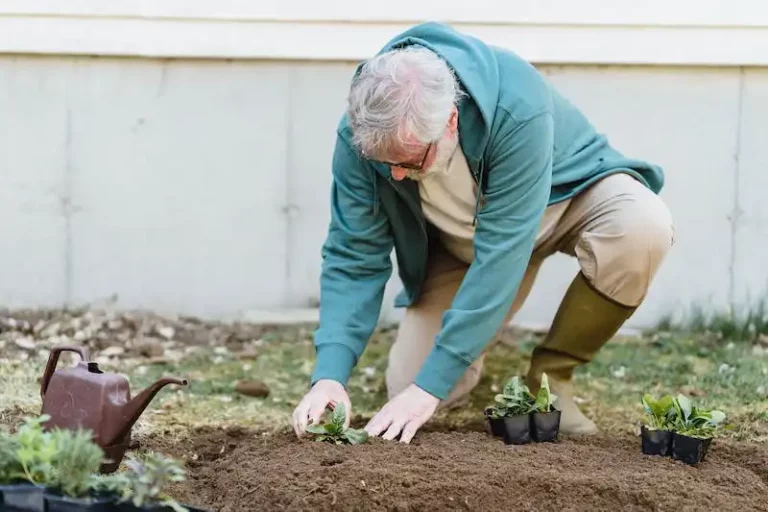Shallots are a high-class culinary ingredient that adds a unique and delicate flavor to many dishes. These small, onion-like bulbs are also called Allium ascalonicum and are often referred to as the gourmet member of the onion family. In many areas, shallots are fall-planted and begin producing tubular foliage before the weather cools down. However, in colder zones, they are often spring-planted.
One of the key factors to ensure the successful growth of shallots is proper soil preparation. Shallots prefer fertile, well-drained soil. Before planting, the soil should be amended with organic matter to improve its structure and fertility. Mulches can also be applied after planting to help conserve moisture and suppress weed growth. If you have any questions regarding soil preparation or shallot planting, don’t hesitate to reach out and send us a message.
When it comes to spacing, shallots should be planted at least 6 inches apart to allow enough room for bulb development. The bulbs themselves should be spaced 2-3 inches apart in the row. This wide spacing ensures good air circulation and helps to prevent diseases. Regular watering is necessary to maintain moisture levels, especially in dry conditions. However, it’s important to avoid overwatering as this can lead to rotting.
Shallots have a longer growing season compared to onions. They require around 90-120 days from planting to harvest, depending on the variety and growing conditions. Harvesting can be done when the foliage starts to turn yellow and begins to die down. The bulbs should be carefully lifted from the soil using a garden fork or trowel, taking care not to damage them. Once harvested, they should be cured and stored in a cool, dry place with good airflow for several weeks before being used in culinary preparations.
Whether you’re a seasoned gardener or a beginner, growing shallots can be a rewarding experience. The authors of this guide have put together a comprehensive resource to help you navigate the challenges and solve the common problems that may arise during the growing process. With proper care and attention to detail, you’ll be able to enjoy the fresh, flavorful shallots in your haute cuisine creations.
How to grow shallots
Producing delicious shallots in your garden is a rewarding endeavor that can add incredible flavor to your haute cuisine dishes. Follow this guide to learn how to grow shallots successfully:
1. Spacing: Shallots generally require about 4-6 inches of spacing between each plant. This spacing allows for good air circulation and helps to prevent diseases and pests.
2. Soil preparation: Begin by preparing the soil where you plan to grow your shallots. It should be well-draining and rich in organic matter. Incorporate compost or well-rotted manure into the soil to improve its fertility.
3. Planting: Shallots are usually planted in the fall or early spring, depending on your location and climate. Plant each shallot bulb with the pointy end facing up, about 1-2 inches deep in the soil.
4. Fertilization: Shallots do not require heavy fertilization. Applying a slow-release organic fertilizer when planting and once more during the growing season should provide sufficient nutrients.
5. Watering and irrigation: Shallots need regular watering, especially during hot and dry periods. Keep the soil consistently moist but not waterlogged. State of the art irrigation systems or even simple drip irrigation can be used to deliver water efficiently to your shallots.
6. Mulches and weeds: Adding a layer of mulch around your shallots can help maintain soil moisture, suppress weeds, and regulate soil temperatures. Keep the area around the plants weed-free to reduce competition for nutrients.
7. Pests and diseases: Shallots are generally resistant to many pests and diseases. However, keep an eye out for common problems like aphids, onion flies, and onion mildew. Apply appropriate organic pest control methods if necessary.
8. Harvesting: Shallots are typically ready to harvest when the tops turn yellow and begin to fall over. Gently lift them from the soil and allow them to dry for a few days in a well-ventilated area. Once dry, cut off the tops and roots, and they’ll be ready for storing or cooking.
9. Storing: Shallots can be stored in a cool, dry, and dark place for several months. They should be kept in a well-ventilated container or mesh bag to allow air circulation. Check them regularly for any signs of mold or rot and discard any spoiled shallots.
By following these simple steps, you can grow your own high-quality shallots and enjoy their unique flavor in your culinary creations. Start growing shallots today, and experience the joy of harvesting and using your homegrown produce!
How to plant shallots
Planting shallots is a straightforward process that can be done in a variety of climates and growing conditions. Here are some basic steps to guide you through the process:
1. Choose the right time: Shallots can be planted in both the spring and the fall, depending on your area and climate. Spring-planted shallots will be ready for harvest in late summer, while fall-planted shallots can be harvested in the following spring. It’s important to choose a time when the ground is not frozen and the soil temperature is above 40°F (4°C).
2. Prepare the soil: Shallots prefer well-drained soil that is rich in organic matter. Before planting, remove any weeds or other plant material from the area and amend the soil with compost or well-rotted manure. It’s also a good idea to incorporate a balanced fertilizer to provide necessary nutrition for the shallots.
3. Plant the shallots: Shallot bulbs should be planted about 1 inch (2.5 cm) deep and 6 inches (15 cm) apart in rows that are spaced 12 inches (30 cm) apart. Make sure to plant them with the pointed end facing up. If your soil is heavy or tends to retain moisture, you can also plant them in raised beds to improve drainage.
4. Water and mulch: After planting, water the shallots thoroughly to help them establish. They will need regular irrigation throughout the growing season, especially during dry periods. Mulching around the plants can help conserve moisture and suppress the growth of weeds.
5. Pruning and fertilization: Shallots generally don’t require much pruning, but you can remove any dead or yellowing leaves as needed. As for fertilization, a balanced fertilizer can be applied once a month during the growing season to promote healthy growth.
6. Harvesting and storing: Shallots are ready to be harvested when the foliage starts to turn yellow and wilt. Carefully dig up the bulbs and remove any soil, then let them dry in a warm and well-ventilated area for a week. Once dry, trim the tops to about 1 inch (2.5 cm) and store them in a cool and dark place with good air circulation.
Now that you know how to plant shallots, you’ll be able to enjoy their delicate flavor in your cooking. Just remember to read up on any specific growing facts or troubleshooting tips for your area, as the requirements may vary. Happy growing!
How to care for shallots
Growing shallots can be a rewarding and delicious addition to your garden. Here is a guide on how to care for shallots:
- Choose the right soil: Shallots prefer well-drained soils that are rich in organic matter. Make sure the soil is loose and friable to allow the roots to grow deep.
- Planting: Shallots are typically planted in the fall or early spring. Plant them in rows or beds, ensuring that they have enough space to grow and compete with other plants.
- Sunlight: Shallots need full sunlight, but they can tolerate some shade as well. Aim to provide them with at least 6 hours of direct sunlight a day.
- Watering: Shallots require regular watering, especially during hot and dry periods. Keep the soil consistently moist, but be careful not to overwater them, as this can lead to fungal diseases.
- Fertilizing: Shallots generally do not require much fertilizer. However, you can apply a balanced fertilizer in early spring to promote growth.
- Harvesting: Shallots are usually ready for harvest in July or August. Wait until the foliage turns yellow and starts to fall down. Gently dig up the bulbs, ensuring not to damage them. Allow them to dry in a cool, dry place before storing them.
- Storing: Shallots can be stored for up to a year if kept in a cool, dry, and well-ventilated place. You can also braid them together for easy hanging.
- Pests and diseases: Shallots are generally resilient to pests and diseases, but they can sometimes be affected by onion maggots or fungal diseases. To prevent these issues, practice good garden hygiene and keep the area free from weeds and debris.
By following this guide, you can ensure the health and productivity of your shallots year after year. If you have any questions or need further information, consult gardening books or seek advice from experienced gardeners in your area.
How to harvest shallots
Harvesting shallots is an exciting moment for every gardener, as it marks the culmination of months of care and attention. Here’s a step-by-step guide to help you harvest your shallots at the perfect time:
1. Timing: Harvest shallots when the tops (foliage) have started to die down. This usually occurs in late July or early August. If you live in a colder area, you may need to harvest earlier to avoid frost damage.
2. Preparing the area: Before you start harvesting, make sure the soil is dry. If the soil is wet, it can cling to the bulbs and make cleaning them difficult.
3. Loosening the soil: Gently loosen the soil around the shallots with a garden fork or trowel. Be careful not to damage the bulbs.
4. Lifting the bulbs: Lift the bulbs out of the ground using your hands or a garden fork. Start digging from the outside of the row and work your way inwards, giving each bulb enough space.
5. Cleaning the bulbs: Remove any excess soil from the bulbs by gently brushing them or shaking off the dirt. Avoid washing the bulbs, as this can reduce their storage life.
6. Curing: Lay the harvested shallots in a single layer on a clean, dry surface such as a wire mesh or a sheet. Leave them there for about a week to cure. This helps the bulbs develop a papery skin and allows any remaining moisture to evaporate.
7. Trimming the foliage: After the curing period, trim the foliage down to about an inch above the bulbs. This helps the bulbs store better and prevents excess moisture loss.
8. Storing: Store your harvested shallots in a cool, dry, and well-ventilated place. You can store them in mesh bags, paper bags, or wooden crates. Avoid storing them in plastic bags, as this can trap moisture and promote spoilage.
9. Troubleshooting: If you notice any signs of rot or damage on the bulbs, separate those affected shallots from the healthy ones. Use the damaged shallots first, as they will not store well.
10. Fertilizing and Mulching: After harvesting, you can fertilize the soil for future crops. Apply a balanced fertilizer according to the manufacturer’s instructions. You can also apply a layer of mulch around the bulbs to suppress weeds and conserve moisture.
Remember, the quality of your harvested shallots depends on proper growing techniques and timely harvesting. Follow this guide to ensure your shallots are flavorful, healthy, and perfect for cooking.

